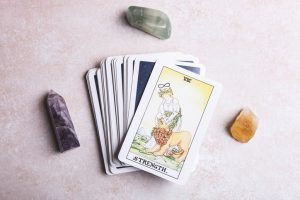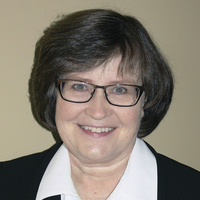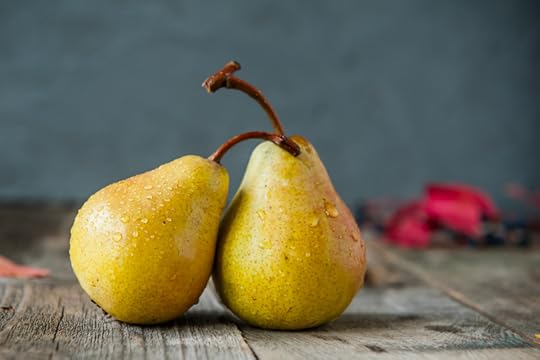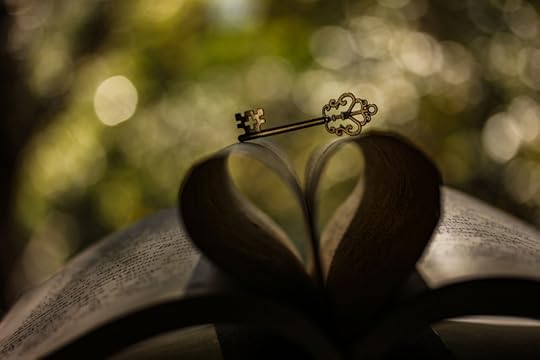Llewellyn Publications's Blog, page 25
January 27, 2020
Happy Lammas to Our Southern Hemisphere Friends!
Here in the northern hemisphere, Imbolc is almost upon us, but for our southern hemisphere friends, it is time for Lammas. To help you celebrate, we’ve rounded up our best rituals, spells, books, and more!
Traditional Lughnasadh with a Modern Twist: Discover fun ways to make your Lughnasadh celebrations more modern.
Lucky Deva Abundance Charm for Lammas: Craft a lucky abundance charm for Lammas with these instructions from HedgeWitch author Silver RavenWolf.
Pear Spice Cake for Lammas: Pears are beginning to ripen around Lughnasadh. This pear spice cake honors all the gifts of the land plus it is a wonderful snack for gatherings. If you prefer, serve it as a celebratory dessert after games or ritual.
Blessed Berry Lemonade for Lammas: Berries are very important at this time of year; let’s honor their ancient value and enjoy the sweet tartness of a cooling berry-filled lemonade on a warm afternoon.
A Lughnasadh Tarot Ritual: Lughnasadh marks the first of the three harvests; it is a time of abundance and happiness, but it also marks the beginning of the waning half of the year. Use this tarot ritual for change to experience the journey of change this Lughnasadh.
Imbolc Spells: Browse our spells to find your perfect Lammas ritual or incantation. Whether you’re looking for abundance, transformation, fertility, or fruitful harvests, we have a spell for you.
Books:
Lughnasadh
Llewellyn’s 2021 Sabbats Almanac
Rituals of Celebration
Supermarket Sabbats
Sabbats
The Witch’s Wheel of the Year
January 22, 2020
A Practice with a Surprise Side Affect

Intentional Tarot by Denise Hesselroth
There are a lot of reasons to love Intentional Tarot by Denise Hesselroth, such as her unique approach which brings practical benefits and her lovely writing voice. I love her gentle, pro-active approach to living. I also love her practicality. In the excerpt below from Intentional Tarot, Hesselroth suggests a way to practice reading for yourself, learning about larger cycles of energy in your life, and manifest blessings and beauty in the world.
Proactive Activation
If you have a goal that you would like to put forth to the universe, you don’t have to wait to find someone to give you a reading. You can begin a reading for yourself for the express purpose of laying down the activation cards you have in mind and sending out the energies to manifest the outcomes you desire in your life.
Look at the list of common types of tarot readings that follow. You probably have hopes and dreams for many of these topics, not only for yourself but for friends and family, too. You can practice both your tarot reading and your tarot activation by doing readings on a few topics every day. This will fill your week with cycles of energy, from the universe to you and from you to the universe, as you put forth your desires for many of these topics.
Relationships: love, romance, friendships, partnerships, family dynamics
Finances: work or other sources of income, career, major purchases, making ends meet, clarification on major influences
Health: specific concerns, upcoming procedures, general healing, improving habits
Recreation: vacation plans, work life balance, finding joy
Inner World: spirituality, self-understanding, life transitions, working through grief, looking for fresh insights, manifesting dreams
It feels to me that all traditional tarot readings are some version of a request to “help me know what to do” or “tell me what’s going on” in relation to the question at hand. Coming at a traditional reading from the perspective that you already know what outcome you desire will make an amazing difference in how you will interpret the cards, and even in the actual cards that the universal energies will cause to appear in the spread. The cycle of energies involved will be flowing full circle from the beginning, making the cards you receive and the cards you send out even more meaningful.
January 13, 2020
The Magick Of Gathering In The Kitchen
Readers, please enjoy this guest blog post by Gwion Raven, author of the new Magick of Food.
 Have you noticed that anytime you invite a few people over, within ten minutes, every guest is inexplicably standing in the kitchen? Why is that? What’s the secret power an oven, a cutting board, and a double stainless steel sink project, that renders a perfectly plush sofa and accompanying comfy chairs, completely useless? I think there are two reasons. One is totally practical, the other leans to biology, and both can be cultivated by magick.
Have you noticed that anytime you invite a few people over, within ten minutes, every guest is inexplicably standing in the kitchen? Why is that? What’s the secret power an oven, a cutting board, and a double stainless steel sink project, that renders a perfectly plush sofa and accompanying comfy chairs, completely useless? I think there are two reasons. One is totally practical, the other leans to biology, and both can be cultivated by magick.
Kitchens Are Weirdly Comfortable
The last time you visited someone else’s house and wound up in their kitchen, I bet you leaned against the cupboards or drawers. It’s quite possible that you put your elbows on the counter while you were drinking your tea or coffee. Kitchens are great places to stand and lean. You can put your wine glass down on practically any surface, and if it spills, you haven’t permanently damaged anything. Compare the relatively welcoming and easy-to-clean confines of the kitchen with the living room, fraught with peril. There’s fabric everywhere. Bite into your sandwich and risk yellow mustard hitting the carpet? Not likely.
Kitchens and Biology
Being in a kitchen is a feast for the senses. Sizzling onions, roasting proteins, and bubbling pots of winter soup. Can you smell them? Generally speaking, humans can’t resist food and for good reason. Our bodies instinctively know that food means survival. When we eat or anticipate eating, thousands upon thousands of chemical reactions go into overdrive and tell our brains that all will be well if we just have a quick bite to eat. When we sense there’s food about, our human curiosity takes over and we have to investigate. What’s on that plate? That pot looks inviting, maybe I’ll lift the lid and see what’s in it. What’s Elysia eating? It looks delicious. Where did she get that?
You’re hardwired to go where the food is, so naturally, when you show up at a housewarming party, backyard barbecue, or weekly get together, you head straight for the kitchen.
Kitchen Magick
As a kitchen witch, I do certain magick to make my kitchen really inviting. I want people in my kitchen, hangin’ out, chatting with me, tipping back a cocktail, or munching on something I’ve just pulled out of the oven. Here are a few of my secrets…Just a few though—after all, I can’t tell you everything I do.
Have something cooking before your guests arrive. There’s nothing like being greeted at the door with a huge whiff of already cooking food. Immediately, my guests know we’re going to eat. They relax (see, here’s biology taking over), they start getting comfortable and come into the kitchen. Then we chat about whatever tasty concoction I’m working on.
Eat with your eyes as well as your mouth. Food tastes better when it’s colourful, and I’m not just talking about the ingredients. Make the whole affair a visual feast.There’s a red tagine in my kitchen. A rack of red and brown and yellow spices is in clear sight. Fresh, green herbs sit in mason jars along the windowsill. There’s nearly always bright yellow lemons, and deep ruby beets, and a favourite red and purple bowl that I love to serve meals in.
Invite your guests to stir in a little magick. My favourite piece of kitchen witchery is to have my guests do a little magick with me. I’ll ask, “What’s one thing you wish for from this gathering?” (or holiday, coven meeting, whatever). I ask them to stir the pot, mix the salad, or swizzle their cocktails with that intention.
People will always gravitate to the kitchen because it’s the hearth and heart of the house. Kitchen magick happens all the time, whenever we chop and saute. Adding a pinch of magick here and a dash of magick there is as easy tossing in a handful of carefully herbs at just the right moment. And anyone in your kitchen can help with that!
Our thanks to Gwion for his guest post! For more from Gwion Raven, read his article “Five Quick and Easy Spells Every Kitchen Witch Should Know.”
January 10, 2020
Author Noel Tyl Has Passed
Today we sadly mark the passing of Noel Jan Tyl, who authored more than 30 books on astrology and related topics. His first book, The Horoscope Identity, was published by Llewellyn 46 years ago and led to a long-standing friendship with Carl Llewellyn Weschke. The two became neighbors in St. Paul, MN during the 1970s, and he helped Carl at book fairs and conferences. Carl had many great anecdotal stories about their time together.
Tyl was a towering figure, not only in stature but in the field of astrology. His 12-book series The Principles and Practice of Astrology were a fundamental resource to the study of astrology. What many people do not know is that Noel was also a classical opera singer and performed in opera houses around the world. When the Harvard graduate was not singing, he spent his time teaching astrology to generations.
Additional information on Noel Tyl’s books can be found here, and additional information on his life and background can be found be found here.
January 9, 2020
Your 2020 TarotScope by Astrological Sign

Wondering what 2020 has in store for you? We are, too! So, we had one of our resident tarot readers, J. Ryan, pull a card for each astrological sign to see what can be expected in the coming year. (Love the cards? We’re using the upcoming Pisces, and it may be hard to realize that it has finally arrived. You see, you’re so used to working hard for everything that when the goals finally begin lining up it can be downright disconcerting. 2020 is your time to accept the gifts coming to you from the universe and from others around you. They aren’t handouts and they aren’t from pity. You’ve earned a little pampering this year. Let others take the wheel and pay you back for all the care that you’ve given them in time. Possible words to bear in mind for 2020 are: Acceptance, Hope, Rewards.
January 8, 2020
The Best Way for YOU to Learn Tarot

Intentional Tarot by Denise Hesselroth
There are a lot of reasons to love Intentional Tarot by Denise Hesselroth, such as her unique approach which brings practical benefits and her lovely writing voice. Another bonus in these pages is her discussion of learning styles. Newbies often ask “how is the best way to learn the cards?” Every reader would have their own advice, probably based on their experience. However, people learn differently and their natural inclination should shape their learning process.
In this excerpt from Intentional Tarot, Hesselroth discusses three types of tarot learners.
Getting Off Book
It seems to me there are three types of beginners when it comes to learning the meanings of the tarot cards, or I could say “deciding what the meaning of each card is for you,” since no two readers will see the cards in exactly the same way. As anyone who loves to pore over a new deck or tarot book can attest, you will probably be tweaking your understanding of each card your whole life.
Textbook Beginner (The Thinker)
This person prefers an RWS-type deck and reading about the interpretations from one or more books or online resources. They may eventually include one or more non-RWS decks in their tarot library. They might become interested in the correspondences found between some tarot card meanings and other esoteric schools such as astrology or the kabbalah.
Unconventional Beginner (The Explorer)
This person prefers a deck such as the Thoth or another deck that differs to varying degrees from the RWS images and reading the book that comes with that deck or online resources. They may eventually include one or more RWS-type decks in their tarot library. And while correspondences to other schools of thought such as astrology and the kabbalah definitely exist in the RWS, other types of decks often make these connections a major focus of the deck’s development and need to be studied along with the basic tarot meanings.
Personal Intuition Beginner (The Dreamer)
This person could be working with any deck, but they do very little study of the card meanings via books or online. They are guided or guide themselves to intuit their own meanings and insights for each card. They may eventually go on to study some of the classic tarot manuals that have been published, but they usually rely on their psychic intuitions first.
Each beginner will have their own way of advancing and perhaps eventually doing readings without the help of books or notes. It’s important to find your unique voice as you develop a way to read the cards that works for you. Here are some things that have helped me, a Textbook Beginner, finally put my books aside and feel confident on my own. These hints will probably work best for the Thinker/Explorer types while the Dreamers might prefer to hone their natural psychic connection to each card instead.
Get used to handling the cards. Practice shuffling them. Get some muscle memory in your hands so you feel comfortable with them physically. When you’re at home, carry them around with you as much as you would your cell phone. Tarot cards are generally quite a bit larger than standard playing card decks and can take some getting used to.
Sit at a table and put the cards into groupings. Put each number of the pip cards together and get a sense of what makes them similar or different. Look at the progress of each suit from ace to ten and see how the essence of the suit evolves. Compare the details on the court cards. Play with different ways to organize the major arcana that help you see the story of The Fool’s Journey or other major themes that seem to appear.
Look up the meanings of the first few cards that catch your eye in what- ever resources you plan to use. Depending on your study style, you might have just one tarot deck companion book, or you may have one or more what you consider to be beginner, easy, or classic books that you find helpful and informative. These are often very effective sources for getting started with tarot. Dreamers might prefer to select a book with only a small number of keywords. Get familiar with how the book is arranged. Put some sticky notes at the beginning of each section so you can quickly find the cards you’ll eventually be looking for.
Start getting methodical about reading the descriptions for each card while holding the card in your hand and looking for details in the images. However, don’t read about more than ten cards at one sitting. Put down your studies for at least a few hours; then if you come back in the same day, go over those same ten cards again. Theoretically, it should take over a week of daily study to get through all of the seventy-eight cards. If you get bored or confused it probably means one of two things: (1) that’s not the right book and/or deck for you, or (2) studying is hard and sometimes just not fun but you can push on through if you work at it. I don’t know how many times I’ve bought a new deck and read through the Fool and the Magician, maybe a few more majors and a few of the pip cards, then had to put the deck aside and move on to other priorities in my life. Studying takes time and attention.
After you’ve put a good effort into studying all the card meanings, put the book aside. (Dreamers: you can jump in here if you prefer not to study from books.) Shuffle your deck and place it face down. Turn over and look at one card at a time. Try to feel what its core meaning is for you, based both on your recent studies and any personal insights you may get from the details in the images. A picture is worth a thousand words, so you don’t need to think in verbal terms about the meanings. Refer to your books and notes as much as you want to. You should only do up to a dozen or so cards at a time, then step away for a while.
Using pen and paper or a spreadsheet or your favorite document soft- ware, write down two or three words for each of the seventy-eight cards. These words can come from books and/or your own intuition. Having the information come out of your own hands to the paper leads to a different type of memory than just hours of reading.
Can you imagine a photo you have of a favorite aunt or sister or goofy friend? When you think of or look at that photo, you can feel the essence of who that person is, how you feel about them, and what was happening right at that moment. That is the goal for linking the men- tal image of a card to its core meaning. Close your eyes and mentally go through the Ace through Ten of one suit, picture the image, and think of your keywords. After the right amount of focused study, this visual exercise will usually be enough to bring the feeling of your full core meaning to mind. When you mentally get to a card that you can’t remember (“Six of Pentacles, what the heck does the Six of Pentacles look like?”), then open your eyes, check your materials and start over from the beginning of the suit. Work on one suit of cards for a few days, then practice a different suit. Do the same for the court cards and different groups of major arcana cards.
You will know you are starting to get off book when you can mentally go through all seventy-eight cards at one sitting, picturing the image of each card (if visuals trigger memories like they do for me), and remembering your core meaning for it. I do this exercise maybe once a month and am successful about 95 percent of the time.
January 7, 2020
The Powerful Start of 2020 Astrologically
Readers, please enjoy this guest blog post by David Pond, author of several books, including Astrology & Relationships and the new Astrology for Beginners.
The New Year begins with some of the most intense and powerful astrological aspects of the whole year, with the Full Moon Lunar Eclipse in Cancer on January 10, 2020 and the world-shaping Saturn/Pluto conjunction just two days later on January 12, 2020. This is bringing global tensions and environmental problems to a head. Full Moon weeks are always intense, and in the sensitive water sign Cancer, all the more—and with the Eclipse, all the more yet.
The dominant energy of the heavens is still Capricorn, with five planets and the South Node all in this sign of worldly responsibilities and demanding self-mastery in some area of your life. With so many demands from the “should monster,” you can start feeling like a cog in a wheel, while emotional needs and personal matters get squished out in the machinery of your life. But not this week—personal and emotional needs come roaring back.
In the chart for the eclipse, notice the tremendous grouping of Capricorn planets at the top of the chart opposite the Moon in Cancer at the bottom.

Use the eclipse to examine where your personal life and emotional needs have been eclipsed by other responsibilities. Questions of authority surface with the Saturn/Pluto conjunction. Can you reclaim authority in your life to schedule in time for your personal life and some type of self-nurturing activity? Who is the boss of you? Who gives you permission to live your life the way you choose? To be your own authority, claim responsibility for creating a daily schedule that allows for a balance of tending to your needs for emotional fulfillment along with tending to all of your worldly responsibilities.
Need to Sharpen Your Astrological Language Abilities?
My newest book from Llewellyn, Astrology for Beginners, will be released February 8, 2020, and is available now for pre-order. If you are new to astrology, or would like to sharpen your astrological skills to learn how to interpret your own birth chart and the birth charts of others, this book is an excellent tool. Before I began my astrology career, 45 years ago, I was an elementary school teacher and developed a knack for taking complex issues, such as astrology, and making them accessible in easily understood language.
Concise and direct, this easy-to-follow guide provides everything needed to uncover the secrets of your birth chart and reveal amazing insights about your true nature. You’ll gain an incredibly expanded understanding of yourself―and others―with this book’s extensive information and examples. You will be taken through the steps of learning the meaning of the signs, planets houses and aspects and how to synthesis all this information so that ultimately you will be able to interpret an astrological chart yourself.
Our thanks to David for his guest post! For more from David Pond, read his article “The Outer Planets: How Uranus, Neptune, and Pluto Contribute to Spiritual Growth.”
January 6, 2020
Making Space for Our Magic: On Queer Inclusion in Pagan and Magical Communities
Readers, please enjoy this guest blog post by Misha Magdalene, author of the new Outside the Charmed Circle.
 From “bathroom bills” to the #MeToo movement, our culture’s struggles with issues of gender and sexuality have been at the heart of cultural change at our current moment in history. The past few decades have seen great strides and great losses in rights for queer* people, along with a profound shift in the philosophies around gender and sexuality and the language used to discuss them. The Pagan, polytheist, and magical communities are as immersed in these struggles as the rest of the overculture, and in some ways we’ve been part of the vanguard of these issues. As a nexus of “outsider” faiths and practices, our communities have long been welcoming to people whose experiences of gender and sexuality are similarly outside societal norms. (*By “queer,” I’m referring people whose expressions and experiences of sexuality or gender fall outside strictly cis-gender heterosexuality, including lesbian, gay, bisexual, pansexual, asexual, transgender, and non-binary people, among others.)
From “bathroom bills” to the #MeToo movement, our culture’s struggles with issues of gender and sexuality have been at the heart of cultural change at our current moment in history. The past few decades have seen great strides and great losses in rights for queer* people, along with a profound shift in the philosophies around gender and sexuality and the language used to discuss them. The Pagan, polytheist, and magical communities are as immersed in these struggles as the rest of the overculture, and in some ways we’ve been part of the vanguard of these issues. As a nexus of “outsider” faiths and practices, our communities have long been welcoming to people whose experiences of gender and sexuality are similarly outside societal norms. (*By “queer,” I’m referring people whose expressions and experiences of sexuality or gender fall outside strictly cis-gender heterosexuality, including lesbian, gay, bisexual, pansexual, asexual, transgender, and non-binary people, among others.)
Sad to say, they’ve also been indifferent or hostile towards queer people, especially those whose gender and sexuality contradict the community’s own, often unexamined, assumptions and biases.
This ambivalence towards queer people is especially frustrating because we’ve always been an integral part of these communities of devotion and practice. From Hyacinthus to Loki, from Hermaphroditus to Babalon, queer narratives have always been a part of our myths, across a wide panoply of cultures and cosmologies. Looking at the modern era, queer experiences have always been a part of the modern Pagan and polytheist movements. After all, queerness is magical, and queer people have a magic all our own. Queer practitioners of all stripes have been among the founders, forebears, thinkers, writers, ritualists, and artists whose lives and work create and define the shape of Pagan, polytheist, and magical cultures. Without queer people, without our narratives and our experiences, the larger body of practice and culture from which we all benefit is impoverished, and our communities become…well, less magical.
When queer people, queer narratives, and queer experiences are welcomed and embraced by the larger community, when we’re allowed to share our magic openly and without fear, our communities, traditions, and practices are made richer, more vibrant, and more truly reflective of the world around us.
In short, they’re made better for all of us.
Our thanks to Misha for their guest post! For more from Misha Magdalene, read their article, “Five Life Lessons I’ve Learned from Doing Magic.”
December 31, 2019
Intentional Tarot
Readers, please enjoy this guest blog post by Denise Hesselroth, author of Intentional Tarot: Using the Cards with Purpose.


We are living in interesting times. Sometimes it can feel like things are daily spinning more and more into bizarre and frustrating directions. As a balancing energy, many people are working harder at efforts to control the chaos. One way we can bring this balancing energy into our tarot practice is to use what I have been calling Intentional Tarot.
In traditional tarot readings, we look to randomly drawn cards to counsel and advise us about immediate issues in our personal lives. This is an inward pull of energy from, “Whatever it is that makes the cards work,” through the cards, and into our lives. With Intentional Tarot we choose to be the source of energy: it flows from us, through the cards, and out into the Universe.
In an Intentional Tarot spread we start with a solution, not a question, and we select cards face up with intention, not face down randomly. This gives us agency in situations where we might feel totally helpless.
The layout I most often use for Intentional Tarot has four positions. The first position is called My Understanding, and this is where I put cards that reflect how I see the problem that I’m addressing in the spread. No one is perfect, and I might be misunderstanding what is really going on. If the solution I will be presenting isn’t the best, I leave it up to the Universe to take my intentions for the general good of all. I try to reduce my focus to three or four cards that reflect what I’m thinking, otherwise I can end up venting in an unfocused frustrated pile of cards.
The second position is called My Goal. This is where I put cards that reflect my desires for an eventual outcome to the situation shown in My Understanding. Unlike the Janice Joplin song that says, “Oh Lord, won’t you buy me a Mercedes Benz,” I try to keep my goals fairly general. In the same way that I might not have perfect understanding, I might not know the specific steps that will achieve a beneficial outcome. I ask for Justice. I ask for Happiness. I ask for Healing.
The third position is called My Promise. It’s frustrating to hear the “thoughts and prayers” response to national tragedies, when there are more active, concrete solutions available. I use this position to reflect some real-world actions that I can do myself to bring about the goals in the previous position. This is often the most difficult position that I face in the spread, because it requires me to think about what I can do for the situation.
Intentional Tarot isn’t always for frustrating situations. It can be used to direct your energies to bless others (or yourself) with health, happiness, good job prospects, or any good that you wish for them. If you can picture it, you can intentionally select cards that express that wish to the Universe.
Our thanks to Denise for her guest post! For more from Denise Hesselroth, read her article, “How to Activate a Tarot Reading with Your True Intentions.”
December 23, 2019
Again and Again: Why Do We Have Recurring Dreams?
Readers, please enjoy this guest blog post by Linda Yael Schiller, author of Modern Dreamwork.
Most of have had recurrent dreams at some time in our lives. Some of them eventually just disappear, but sometimes they repeat over and over again. They may be simply intriguing or curious, or even fun (like if we have those recurrent flying dreams), but sometimes we feel stalked by a recurrent nightmare. What do all these mean?
Jennifer dreamt that she was taking bus #22 up a winding mountain pass. Three days later she dreamt that a school bus was parked outside her house. The following week she dreamt that she was working as a waitress busing tables.
Mark kept dreaming of his childhood home. Sometimes he was a child in the dreams, sometimes his current age as an adult.
Serena kept dreaming of her alcoholic father who had been dead for several years. He seemed to be trying to talk to her in each dream, but each time she ran from him.
For many years all my dreams begin, “I am in Israel and…” some story would unfold.
What all these dreams and dreamers have in common is the repetitive nature of their dreams. The first dream that Jennifer had even went so far as to offer a doubling: the number 22. We know that when there is a double in our dreams that it has special significance, so she had both the double number and a recurring image.
When we dream of the same theme, object, person, or place over and over, we are being called to pay attention. These dreams are showing us something that some deeper part wants us or do or understand, and our dreaming self is doing its darndest to get our attention. It is saying, “Hello, pay attention here!” Recurring themes indicate that there is something we need at least to notice or perhaps to resolve in our lives. Recurring nightmares are a form of SOS from our unconscious. They may not always come as exactly the same dream, but often repeat a theme or image instead.
Our psyche is a great punster as well. In Jennifer’s dreams, she dreams literally about a bus several times, and then dreams she is “busing” tables. This image or theme of “bus” needs some kind of attention. Her job is to figure out the meaning of a bus is in her life. Jennifer will need to contextualize these dreams in her own life and see what a bus means or symbolizes. Is a bus simply a means of transportation, or one that but she is not in charge of, since some one else is driving? What does it mean for her to “be on the bus,” or, “thrown under the bus?” Does she take a bus to work? What are her unique personal associations to buses? Some symbols resonate across people and cultures; others are idiosyncratic to the dreamer.
When we dream frequently of our childhood homes or a person from our family, we often have some unfinished business to resolve there. Depending on the emotional narrative that accompanies the dreams, we can discern if we need to grieve a loss, overcome a fear, or reconnect with someone we have lost touch with from our childhood. When I worked with Serena on her dream of her father, what stood out for both of us was that he kept trying to tell her something, and she kept running away. Knowing the old adage, “What we resist, persists,” I asked Serena if she would be willing to brave up and face him and see why he kept pursuing her night after night. Once we got her safe and resourced enough she agreed, and behold, her dream father was trying to apologize to her. She was thus able to get some resolution with him in her dreams that she never got in life.
Following a loss or a trauma in our lives, we may dream about the accident or loss over and over. In this case, our psyche helps us to heal by reviewing the events in the dreamtime until they no longer carry as much emotional punch. This is a form of organic desensitization that helps us to heal and move on. If our system is processing the upset well, over time the dreams will automatically lessen in frequency, in intensity, and in vividness until they just fade away.
Finally, shamanic wisdom teaches us that sometimes we have left a part of ourselves behind somewhere, and we have to go and retrieve it to become whole again. This may be literal or figurative. In my case, it was both. After having lived in Israel for several years, I returned to the States to finish graduate school. I settled in Boston, married, had a child, yet my dreams continued. It was only when I returned for a visit and reconnected with an integral part of my being on the land that my dreams gave me more varied and different landscapes to explore.
To continue exploring recurrent dreams, nightmares, and understanding your dreams, I invite you to read my book, Modern Dreamwork: New Tools for Decoding Your Soul’s Wisdom.
Our thanks to Linda for her guest post! For more from Linda Yael Schiller, read her article “Dreaming Beyond: 7 Tips for Connecting with Your Departed Loved Ones Through Your Dreams.”
Llewellyn Publications's Blog
- Llewellyn Publications's profile
- 241 followers









